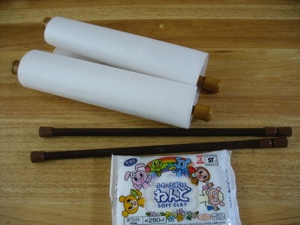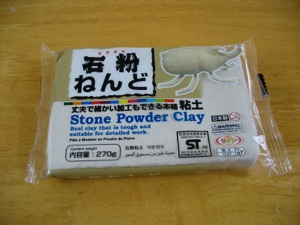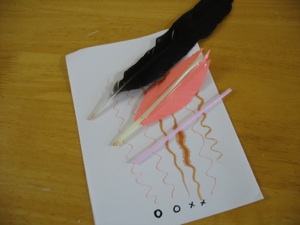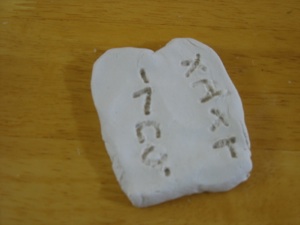Sunday School or Bible Clubs > Ideas for Activities by Reference Jeremiah’s scroll gets burned
SS-LES-Jer. 36
Story: Jeremiah’s scroll gets burned
Reference: Jeremiah 36, II Kings 22-24:2
Main point: Each person chooses whether to repent or rebel when confronted with God’s word
Verse:
The following ideas are grouped into categories by how they might be used in teaching the lesson. Activities to introduce the lesson would not be the same kinds of activities as those used to apply the lesson, although some of the ideas could be used in more than one category. There are several ideas for each category in the hopes that out of 3 or 4 options, one will fit your lesson and your class. So choose one activity from each category--if you try to do them all, the lesson will last for hours! Be sure to read the Bible passage before you read these suggestions, or they won’t make much sense.
Activities for Early Birds:
1. Any of the craft ideas listed below under Reenforcement Activities would make good activities for children who arrive early, but it should not be the same activity as what is used during the lesson, or the children who came early will get bored doing it a second time. 2. Give them pictures to color depicting the day’s lesson,
3. Give them a cut up picture to put together like a puzzle. If the children are quick with puzzles, you could mix two together to make the activity a bit harder.
4. Ask the children if they have ever gotten into trouble (see #1 below under Ideas for an Introduction.) Depending on the kinds of stories they tell, you might be able to use one of their stories to introduce the lesson. If the early children tend to be shy, use a puppet to ask them questions--most children have no problem talking to a puppet.
View how to make a sock puppet
Ideas for an Introduction:
1. Tell about a time you got in trouble, Ask the children to tell about a time they got in trouble. Then ask if any of them have gotten in trouble for doing something good. Tell them that today’s story is about 2 men who did what God told them to do, and how they got in trouble for it.
2. Ask the children if they have ever played hide and seek, but the place was so good that they didn’t get found? Ask them if God hid them, would anyone be able to find them? Tell them that today’s story is about 2 men that God hid so the bad men would not find them.
3. Ask the children if they have ever had a dream about bad guys chasing them. Tell them that today’s story is about 2 men being chased by bad guys, but it was not a dream.
4. If you want to really shock them, pretend to tear out pages of the Bible and burn them. While you are doing this, complain about not liking parts, such as turning the other cheek, letting someone take your coat, or walking the second mile. You can do this realistically by folding several sheets of paper to fit inside the Bible, and tearing these sheets, and burning them on a candle. Make sure you have a heat proof container to drop the burning paper into, and that no smoke detectors will be set off with this activity. Say that today’s story is about a man who didn’t like what God had to say, and cut up his Bible, and burned it. You could use this as part of the Bible story instead of an introduction.
5. Tell the story of Josiah, Jehoiakim’s father, so you can compare how Josiah repented when he heard God’s word with Jehoiakim rejecting God’s word in the Bible lesson. If your students have recently heard the story of Josiah, you could change the details to make it happen in present times, then ask them to guess what Bible character they just heard about.
Ideas for Teaching the Bible story:
1. Use a time line to help the students understand the time period this lesson is takes place in, if the previous lessons have come from a different part of the Bible.
2. Quickly review who Jeremiah is, and what they know about him. You can do this in a game format, or by showing them pictures and asking the children questions about Jeremiah. You can just tell them to remind them of who Jeremiah is, but sometimes the story gets too long for the children to sit through--then using different activities can help keep their attention.
3. If you did not use #5 above as an introduction, now would be a good time to quickly review how Josiah repented when the scroll was found in the temple, and compare that to how Jehoiakim, Josiah’s son, rejected God’s words, and did not repent. Each person has to choose what to do with God’s word when they hear it--just because their parents accepted it, does not mean they will, too. They have to choose for themselves.
4. If you did not use #4 above for the introduction, you could use it for telling the Bible story. If it is too hard to try to do that during the Bible lesson, you could ask a man in the church to dress up like a king, and sit behind you, and and cut off pieces of a scroll and burn it at the appropriate time as you tell the story. You could also have people dressed as Jeremiah and Baruch write in a scroll, then hide as you tell the story. You could even have a soldier look for them, but not find them.
5. Make a scroll and quill for telling the story. For the scroll, there are several ways you can make it. You can tape several pages of copier paper together to form a long roll, and tape the ends to dowels from the 100 yen store. Or you can buy a short roll of paper for repairing shoji. If you can’t find dowels, you can buy 2 very short tension rods and make balls at the top and bottom from Hearty. You may be lucky enough to find a crow feather on the ground. But if not, there are instructions below on how to make a quill from a plastic straw that really works.
Ideas for Reenforcement Activities:
1. Craft: Make the day’s verse into a scroll. Photocopy the verse for the lesson with extra white space on either side, one per child. Give them each 2 toothpicks and 4 beads. Show them how to tape each end of the verse to a toothpick, then glue a bead on the top and bottom of each toothpick. They can roll up their “scroll” and tie it with a bit of string or ribbon.
2. Craft: make quills and practice writing with them. Get one plastic straw per child. They can be regular sized, or the really small ones--the 100 yen store sells both kinds. Ahead of time, the teacher should cut each straw at an angle on one end, then cut a 1 cm. slit in the point. Give the children colored paper to cut out a feather to stick to the quill. Glue or tape the feather to the straw. Now they can practice writing. You can buy sumi ink at the 100 yen store, or just mix enough water color paint into water, to be able to see when they write. They should dip the “quill” in the “ink” and scrape it on the side of the cup/ ink well to get off extra drips. They should draw very lightly, or they will crumple the point of the quill, and not be able to use it again. If done correctly, it should create a very fine line. If it comes out in blobs, they are either pressing the quill too hard against the paper, or they have not wiped enough of the ink off before drawing. You may want to practice ahead of time till you get the hang of using these. To keep spills to a minimum, put less than a centimeter of “ink” in a paper cup for each child. The proper way to hold the quill is with the point away from you, and the rest of the straw toward you. It is easiest to pull the pen toward yourself--circles or curved lines are hard to draw.
3. Show the children a copy of the Hebrew alphabet, and explain how it is read from right to left--the opposite of how we read. Then let them try to write their own names, or a simple word, such as “peace.”
4. Often people during that time wrote notes on pieces of broken pots. Buy a pot at the 100 yen store, and break it into pieces. Sand any rough edges. Let each student write the Bible verse on a piece of broken pottery.
5. Children back then learned to write by using a clay tablet. Buy clay. Give each student
some clay and a toothpick, and practice writing the Hebrew alphabet. Erase by rubbing the clay smooth.
Ideas for Application:
1. Play the game "God's Way or My Way." to emphasize the fact that you must choose whether you will repent and obey God’s words, or choose to follow your own way. Your parents choosing is not enough--you have to choose, too.
view the game
print the game
2. Use puppets, or simply roll play different situations when children have to decide whether they will follow God’s way or not.
3. Draw 2 or 3 cartoon strips that present a problem the kids might encounter, but leave the last square empty. The kids draw the last frame--either following God's way, or following their own way. If the class is small, everyone can work together to plan the alternate endings. If the class is large, divide into smaller groups, and assign whether each group should draw a "God's Way" ending, or "Own way" ending. When everyone is done, hold up each strip, and ask the kids to guess if it is God's way or their own way.
4. Talk about how hard it is to take punishment and admit that what we did was wrong. Then tell them situations where kids might get caught doing something wrong. Have half the class come up with the wrong way to respond to correction (get angry, make excuses, blame it on others, take it out on friends or siblings by being mean, doing the same bad thing over again, etc), and the other half think of a good way to respond to correction (humbly admit wrong doing, accept punishment, repent, do restitution. don’t do the same bad thing again, etc) Swap so the kids plan responses for the opposite way for the next situation.
5. Explain to the children that not many people cut out parts of the Bible with scissors or a knife, but lots of people ignore the parts of the Bible that they don’t like, or they get really good at explaining things, and explain so much that they think it says the exact opposite of what the Bible actually says. But if we are going to follow God, we have to obey all of it. Read Rev. 22:18 and discuss how people might do this without actually cutting up the Bible.
6. Tell a story about yourself when you were confronted with doing something wrong, and how you responded--either the right way, or the wrong way. Then tell them that feeling angry is a good warning sign to let them know that they might not be responding the right way. Explain that any time they start feeling angry, they should stop and see if it is because what they are doing is wrong. If is is, they should repent like Josiah, and not “burn the Bible” like Jehoiakim.










